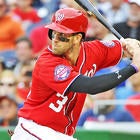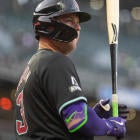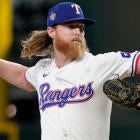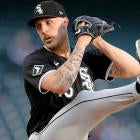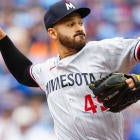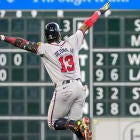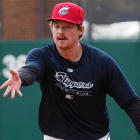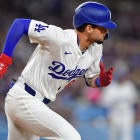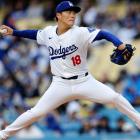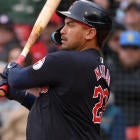Editor's Note: The Paths to Glory series is intended to serve as a starting point for your team. As we all know, baseball drafts become unpredictable as spring training progresses, but the three options provided here should put you on the right path.
Coming off a monster season in which he not only captured the NL MVP award but also entered the record books, delivering the second-highest OPS for a player age 22 or younger, Bryce Harper will challenge Mike Trout for the top overall pick in Fantasy drafts this year. And it's fair to say that if you're the one who drafts him, you'll have a big head start in at least four of the five hitting categories.
Which opens the door to a world of possibilities in Rounds 2-6.
Chances are you're going to have to settle for a less-than-complete player in Round 2 just because the ones with first-round potential typically begin to dwindle about halfway through, but you can afford to be a little greedier than most owners, having a much wider margin for error.
Let's look at three possible draft scenarios for the Harper owner.
Given the way the position breaks down, Troy Tulowitzki really needs to be the second shortstop off the board, and given how early Francisco Lindor and Corey Seager figure to be drafted, he really needs to be off the board by the end of Round 2. You won't find too many people excited to take him, though, so there's a good chance the owner of the first overall pick will be the de facto winner of his services. Less-than-complete players, am I right?
It could end up being a really good thing if he rebounds from his worst season in recent memory, but the possibility of a decline along with the usual injury concerns for the 31-year-old make the pick a risk, albeit a more palatable one for the Harper owner.
That's what I mean by being greedy. With the head start Harper provides, you can afford to take chances on high-ceiling players at shallower positions, knowing the deeper ones will be easier to fill in later rounds. So after jumping in on the early starting pitcher run, you can hope to get some power out of Kyle Schwarber and Matt Carpenter. Neither is exactly a proven source, but you'll have catcher and third base covered even if they don't quite live up to your expectations.
The one thing Harper doesn't provide is stolen bases, so if you focus on position scarcity early, you'll eventually have to make play for a category specialist like Jacoby Ellsbury, which isn't the most elegant solution.
This approach is a little more risk-averse. Jose Abreu is hardly a greedy pick, only adding to the power Harper already provides -- and at a deep position, no less -- but he's worry-free and will ensure you don't squander the Harper advantage.
Madison Bumgarner is basically interchangeable with Corey Kluber -- it's hard to say which of the two will be available at that point -- but if you pick in the Round 2-3 turn, you pretty much have to join in the first starting pitcher run. Harper makes it easier since you're already ahead of the curve in most of the hitter categories. Why not try to keep pace in the pitcher categories as well?
No need for more power after taking Abreu in Round 2, so Charlie Blackmon makes for a better choice than Schwarber and is a much safer bet for 40 steals than Ellsbury at this stage of their careers. The early balance of power and speed makes drafting a second starting pitcher easier, which of course means an advantage in those categories as well. You won't address a premium position until Round 6, though, with Rougned Odor, whose primary contribution figures to be power.
The categories balance a little better here, but it comes at the expense of position diversification. Three of the first six picks are outfielders, neglecting parts of the lineup that are typically harder to fill later in the draft.
You'll also notice that this approach makes the earliest commitment to a starting pitcher. Keep in mind, though, the second and third picks for a Harper owner are close together, potentially even back-to-back, so you could think of Kris Bryant as the second-round pick, if you prefer. David Price is part of the same starting pitcher run as Bumgarner and Kluber, but he's a tick better than those two.
Together, Lorenzo Cain and Starling Marte should give you a leg up in steals while continuing to build up batting average. Even with Bryant, you're likely to be well ahead of the curve in that category by this point, and with no other glaring needs offensively.
Might as well go for a second starting pitcher, right? Noah Syndergaard is one of the last before a steep dropoff, so the timing is right. You could go for Odor here if you're anxious to fill a premium position, but by doing so, you may be overdoing it in the hitter categories -- which is better than underdoing it, of course, but in Rotisserie, balance is the name of the game.
















